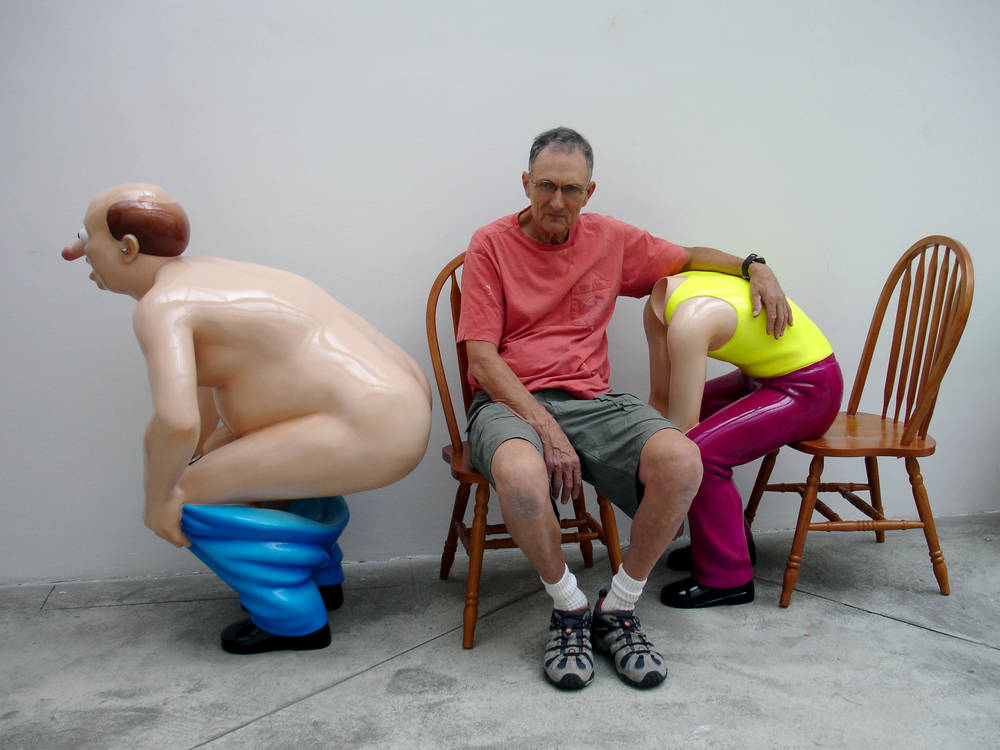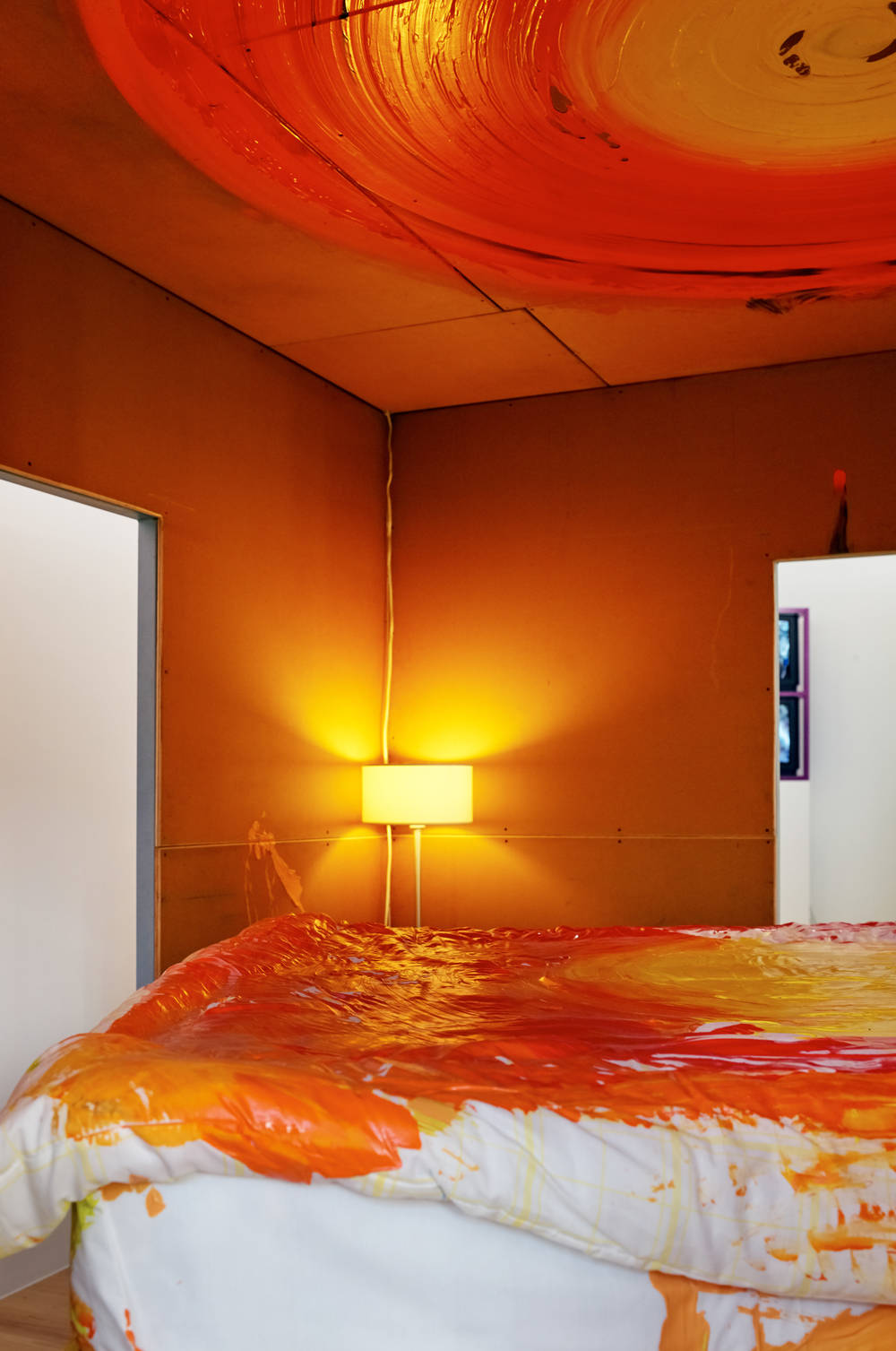Welcome to the West Coast! L.A. was discovered as an art metropolis in the 1960s. Hundreds of galleries opened and a new generation of artists started competing with the New York scene.
For contemporary art in the 1950s and 1960s, there was only one place to be: New York. Or so say the old tales told at length about the great artists of Abstract Expressionism and Pop Art. If more recent art history has taught us anything, however, it’s that there was more than one epicenter of art in the post-War period.
When the big New York newspapers and magazines such as the “New York Times” and “Vogue” discovered Los Angeles as an art destination in the 1960s, they labelled La Cienega Boulevard, where all its galleries were located, the “West Coast Madison Avenue”. Yet a unique scene had long since been evolving in the Sunshine State and was already proving thrillingly influential in contemporary American art. The new generation of artists living in L.A. covered a broad spectrum ranging from Junk Art and assemblage to Finish Fetish and Light and Space.
Lured by the sunny climate, British artist David Hockney wasn’t the only one to make the leap to L.A., where he painted what is probably his best-known series of works centered round “A Bigger Splash”, featuring the very epitome of “easy living” – namely the swimming pools. Artists like Bruce Nauman and James Turrell likewise found inspiration in the cloudless skies and the colors of the Pacific.

David Hockney, A Bigger Splash, 1967 © David Hockney, Image via www.tate.org.uk
As the number of artists living in L.A. grew, so too did the demand for suitable space for the new art they were producing. Although the film, aviation and aerospace industries were flourishing, the city lacked a comprehensive cultural backbone for contemporary art. In reaction to this institutional wasteland, there quickly followed a veritable boom in gallery openings, most notably in Venice Beach and West Hollywood: More than 100 galleries opened their doors within an area of less than a few square kilometers.
More than 100 galleries opened within a very small area
At the peak of this upswing, curator Walter Hopps and artist Edward Kienholz opened the Ferus Gallery at 736A La Cienega Boulevard in 1957, where they exhibited works by Robert Irwin, Craig Kauffman and Ed Ruscha. Originally designed as an exhibition space for local artists, the gallery was later taken over by Irving Blum and its focus soon changed. Blum was known to be a seasoned New York businessmen and was extremely well connected, having made a name for himself as an art consultant with furniture company Knoll. It didn’t take long, therefore, for the Ferus Gallery to lose its formerly cooperative character and develop into a successful business.

Ferus Gallery, 1957-66. Courtesy: Nyehaus, New York, Image via frieze.com
Blum recognized its potential and knew how to use skillful marketing to bring works by established artists such as Andy Warhol or Roy Lichtenstein to the West Coast. With the two founders of the Ferus Gallery, another scene began to form around Pasadena, a suburb of L.A., which was driven by artists from northern California and – thanks to Walter Hopps’ curatorial coup of landing exhibitions by the likes of Kurt Schwitters, Joseph Cornell and Marcel Duchamp – soon had strong roots in the Pasadena Art Museum.
In 1969, Richard Jackson, born in Sacramento, moved to Pasadena after his old friend Edward Kienholz had brought him to L.A. one year previously: The pair were bound particularly by their open, uncompromising and democratic approach to art. Jackson moved into a house on Orange Grove Boulevard that belonged to Walter Hopps and which he occupied for almost three decades with his contemporary and friend Bruce Nauman. One can well imagine how the young men experimented creatively with different materials in this spot at the gateway to the city.

Irving Blum at Warhol's Studio, 1967, Image via netdna-ssl.com
With the exhibition at the Eugenia Butler Gallery in L.A. in 1970, Jackson presented his works on a grand scale for the first time in a show that, for him, not only represented an artistic breakthrough but also helped him to achieve international recognition over the years that followed. Jackson’s aspiration to make painting more interesting also established him as a mentor to the new generation of artists. While teaching alongside Charles Ray and Paul McCarthy at the University of California (UCLA) from 1989 onwards, he passed on his work ethic with its idealism and freedom struggle to students including Julien Bismuth, Mike Bouchet, Jason Rhoades and Jennifer Pastor.

It wasn’t only at UCLA that students were studying art, however: To this day, Greater L.A. boasts the highest density of art schools in the country, where creative minds have been nurturing artistic experimentation for more than half a century. In the Arts District in the downtown area, there is still a spirit of artistic freedom, although the art world of course also became more institutionalized in L.A. from the 1970s onwards.
A healthy competition keeps the business lively
1970 saw the foundation of the Museum of Contemporary Art (MOCA), while the 1984 Olympic Games prompted a shift in external perceptions that led to investments in urban development and the expansion of cultural infrastructure. The Getty Center, which opened in 1997, is now one of the most important art-historical institutions in the world, which bears comparison even with New York’s museums. Healthy competition keeps the business lively – and so Los Angeles and New York will continue winning and losing battles against each other, with the result being ever more great art.










